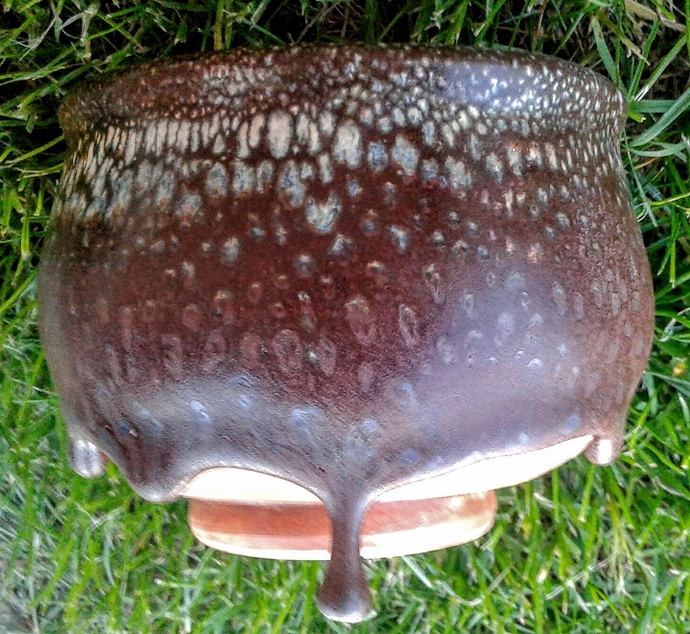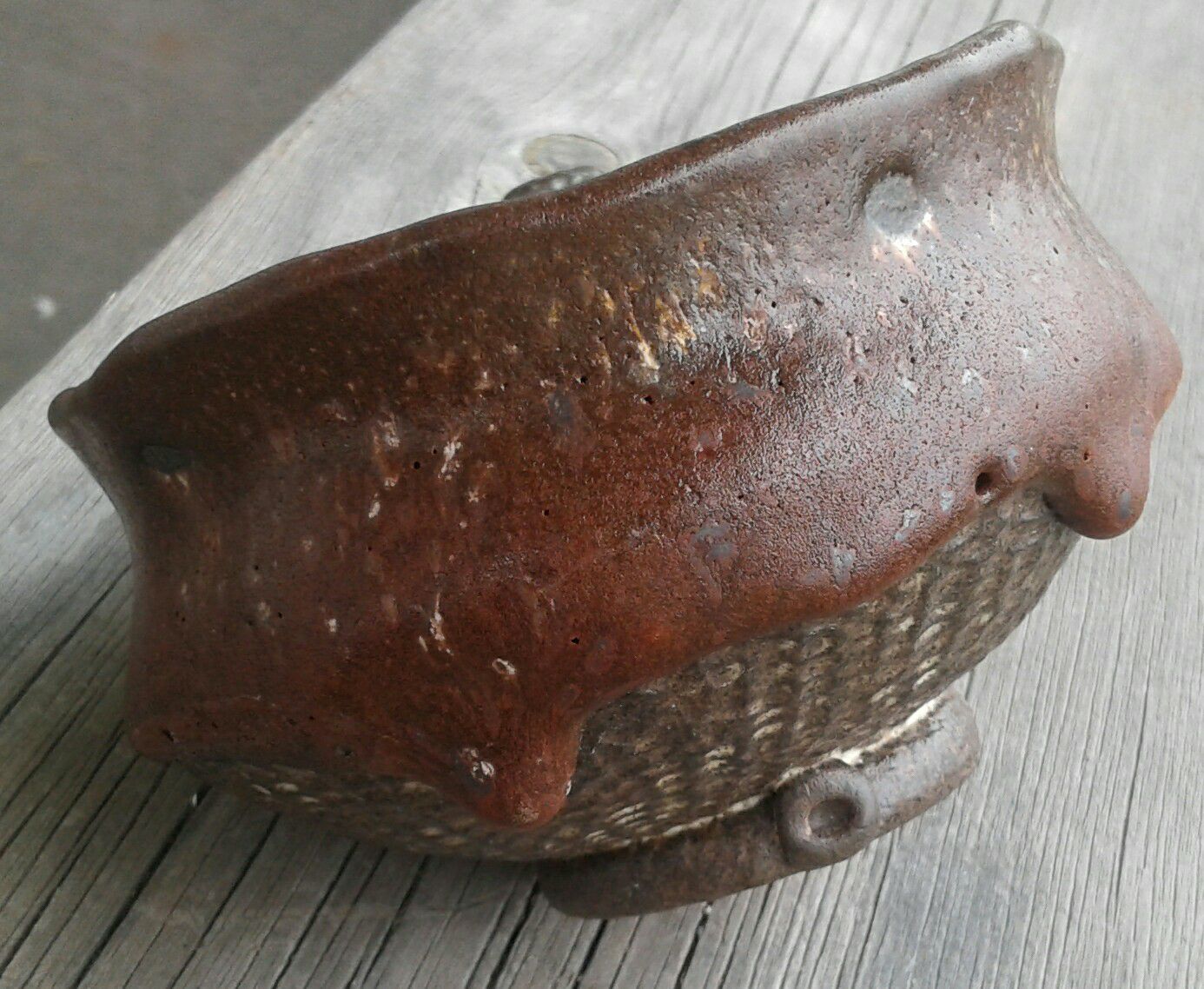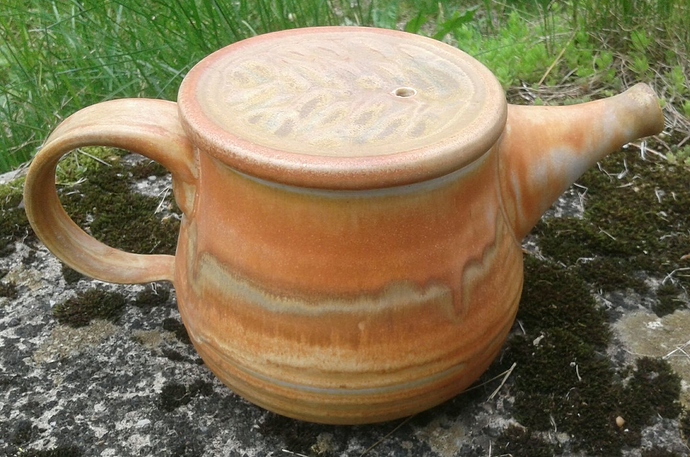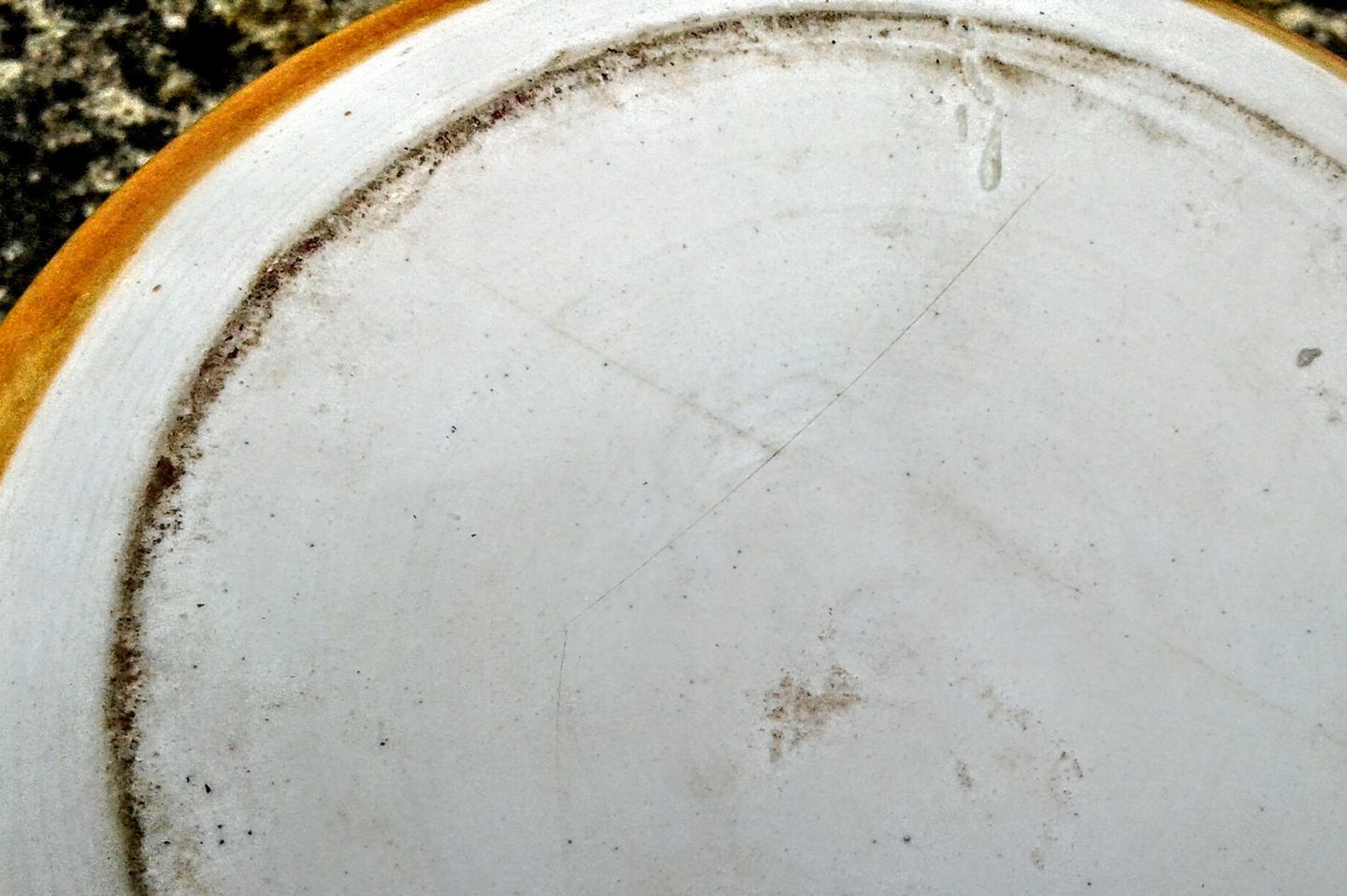This pot has been crushed by the thick lithium fluxed glaze and has dunted (cracked)…there is a different non-lithium glaze inside…I believe it is a good example of how lithium fluxed glaze can behave.
Lithium fluxed silica melts and expands at quartz inversion from alpha quartz to beta quartz (expanded), once the glaze matures, starts to cool, when it goes back through quartz inversion, the lithium fluxed quartz does not covert back to alpha quartz (does not contract)…that means the glass stays bigger than other non-lithium glazes…depending on the COE of the clay body, it can destroy the integrity of the body…only happens with lithium.
I have used the same glaze inside and outside on a well vitrified body, and it only crazed
Same glaze inside and out, on Standard 266, soft cone six…glaze fired two years ago, still rings like a bell. btw, I used Australian spodumene in the glaze pictured, I have a Foote spodumene version that turns out darker
The first glaze problem I ever tackled was this lithium thing, it was pre-internet, so it was hard to get good information…this is the sort of pursuit that leads us to learn more about materials and how they behave
This the teapot that caused me to study lithium…it’s cone ten reduction porcelain…the first glaze firing the large flat foot dunted…so I put some more of the same spodumene glaze inside and fired it again…it dunted with another crack perpendicular to the first crack…that guided me to find out why
If you look closely, you can see the “X” cracks intersecting in the center of the picture






